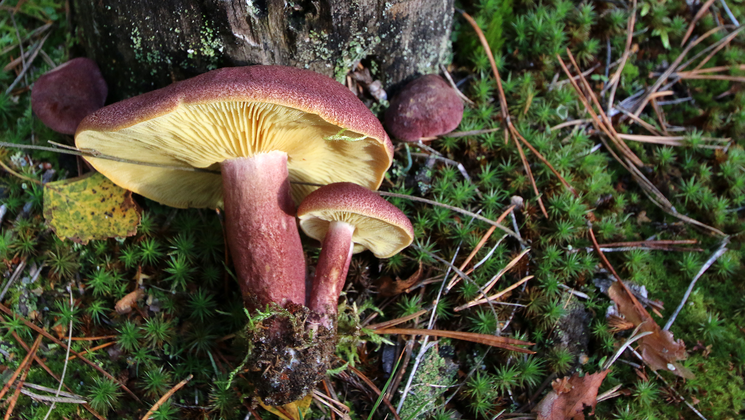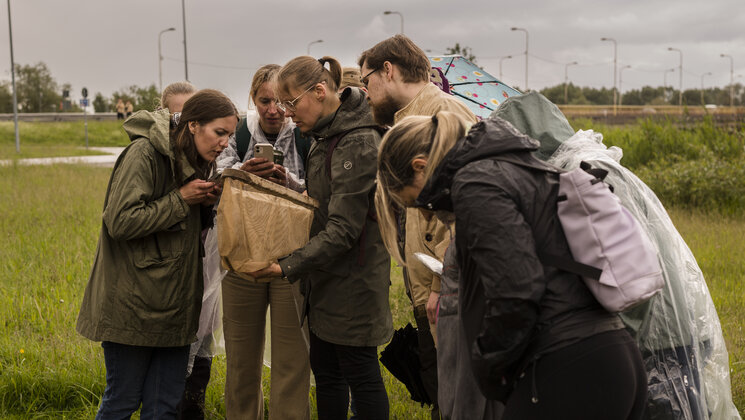-
Faculty of Arts and HumanitiesDean's Office, Faculty of Arts and HumanitiesJakobi 2, r 116-121 51005 Tartu linn, Tartu linn, Tartumaa EST0Institute of History and ArchaeologyJakobi 2 51005 Tartu linn, Tartu linn, Tartumaa EST0Institute of Estonian and General LinguisticsJakobi 2, IV korrus 51005 Tartu linn, Tartu linn, Tartumaa EST0Institute of Philosophy and SemioticsJakobi 2, III korrus, ruumid 302-337 51005 Tartu linn, Tartu linn, Tartumaa EST0Institute of Cultural ResearchÜlikooli 16 51003 Tartu linn, Tartu linn, Tartumaa EST0Institute of Foreign Languages and CulturesLossi 3 51003 Tartu linn, Tartu linn, Tartumaa EST0School of Theology and Religious StudiesÜlikooli 18 50090 Tartu linn, Tartu linn, Tartumaa EST0Viljandi Culture AcademyPosti 1 71004 Viljandi linn, Viljandimaa EST0Professors emeriti, Faculty of Arts and Humanities0Associate Professors emeriti, Faculty of Arts and Humanities0Faculty of Social SciencesDean's Office, Faculty of Social SciencesLossi 36 51003 Tartu linn, Tartu linn, Tartumaa EST0Institute of EducationJakobi 5 51005 Tartu linn, Tartu linn, Tartumaa EST0Johan Skytte Institute of Political StudiesLossi 36, ruum 301 51003 Tartu linn, Tartu linn, Tartumaa EST0School of Economics and Business AdministrationNarva mnt 18 51009 Tartu linn, Tartu linn, Tartumaa EST0Institute of PsychologyNäituse 2 50409 Tartu linn, Tartu linn, Tartumaa EST0School of LawNäituse 20 - 324 50409 Tartu linn, Tartu linn, Tartumaa EST0Institute of Social StudiesLossi 36 51003 Tartu linn, Tartu linn, Tartumaa EST0Narva CollegeRaekoja plats 2 20307 Narva linn, Ida-Virumaa EST0Pärnu CollegeRingi 35 80012 Pärnu linn, Pärnu linn, Pärnumaa EST0Professors emeriti, Faculty of Social Sciences0Associate Professors emeriti, Faculty of Social Sciences0Faculty of MedicineDean's Office, Faculty of MedicineRavila 19 50411 Tartu linn, Tartu linn, Tartumaa ESTInstitute of Biomedicine and Translational MedicineBiomeedikum, Ravila 19 50411 Tartu linn, Tartu linn, Tartumaa ESTInstitute of PharmacyNooruse 1 50411 Tartu linn, Tartu linn, Tartumaa ESTInstitute of DentistryL. Puusepa 1a 50406 Tartu linn, Tartu linn, Tartumaa ESTInstitute of Clinical MedicineL. Puusepa 8 50406 Tartu linn, Tartu linn, Tartumaa ESTInstitute of Family Medicine and Public HealthRavila 19 50411 Tartu linn, Tartu linn, Tartumaa ESTInstitute of Sport Sciences and PhysiotherapyUjula 4 51008 Tartu linn, Tartu linn, Tartumaa ESTProfessors emeriti, Faculty of Medicine0Associate Professors emeriti, Faculty of Medicine0Faculty of Science and TechnologyDean's Office, Faculty of Science and TechnologyVanemuise 46 - 208 51003 Tartu linn, Tartu linn, Tartumaa ESTInstitute of Computer ScienceNarva mnt 18 51009 Tartu linn, Tartu linn, Tartumaa ESTInstitute of GenomicsRiia 23b/2 51010 Tartu linn, Tartu linn, Tartumaa ESTEstonian Marine Institute0Institute of PhysicsInstitute of ChemistryRavila 14a 50411 Tartu linn, Tartu linn, Tartumaa EST0Institute of Mathematics and StatisticsNarva mnt 18 51009 Tartu linn, Tartu linn, Tartumaa EST0Institute of Molecular and Cell BiologyRiia 23, 23b - 134 51010 Tartu linn, Tartu linn, Tartumaa ESTTartu ObservatoryObservatooriumi 1 61602 Tõravere alevik, Nõo vald, Tartumaa EST0Institute of TechnologyNooruse 1 50411 Tartu linn, Tartu linn, Tartumaa ESTInstitute of Ecology and Earth SciencesJ. Liivi tn 2 50409 Tartu linn, Tartu linn, Tartumaa ESTProfessors emeriti, Faculty of Science and Technology0Associate Professors emeriti, Faculty of Science and Technology0Institute of BioengineeringArea of Academic SecretaryHuman Resources OfficeUppsala 6, Lossi 36 51003 Tartu linn, Tartu linn, Tartumaa EST0Area of Head of FinanceFinance Office0Area of Director of AdministrationInformation Technology Office0Administrative OfficeÜlikooli 17 (III korrus) 51005 Tartu linn, Tartu linn, Tartumaa EST0Estates Office0Marketing and Communication OfficeÜlikooli 18, ruumid 102, 104, 209, 210 50090 Tartu linn, Tartu linn, Tartumaa EST0Area of Vice Rector for DevelopmentCentre for Entrepreneurship and InnovationNarva mnt 18 51009 Tartu linn, Tartu linn, Tartumaa EST0University of Tartu Natural History Museum and Botanical GardenVanemuise 46 51003 Tartu linn, Tartu linn, Tartumaa EST0International Cooperation and Protocol Office0University of Tartu MuseumLossi 25 51003 Tartu linn, Tartu linn, Tartumaa EST0Area of RectorRector's Strategy OfficeInternal Audit OfficeArea of Vice Rector for Academic AffairsOffice of Academic AffairsUniversity of Tartu Youth AcademyUppsala 10 51003 Tartu linn, Tartu linn, Tartumaa EST0Student Union OfficeÜlikooli 18b 51005 Tartu linn, Tartu linn, Tartumaa EST0Centre for Learning and TeachingArea of Vice Rector for ResearchUniversity of Tartu LibraryW. Struve 1 50091 Tartu linn, Tartu linn, Tartumaa EST0Grant Office
Designer Liina Lember introduces the life of moths at the Nature Festival
In the framework of the Nature Festival, designer and artist Liina Lember will organise nightly workshops and set up installations at the University of Tartu Natural History Museum and Botanical Garden, the Aparaaditehas and Tallinn Zoo.
Her work addresses urgent global problems such as mass extinction, our understanding of the use of technology and its effects on our health and nature. Her design process is guided by research, experimentation and questioning the status quo. She utilises speculative and critical design processes to bridge the gap between broad disciplines such as science, art and design.
"During the Nature Festival, I will run three workshops on pollination, light pollution and our connection with nature. In these workshops, we will make crafts, experience different light sources and reflect on the impact of light and its importance for us and wildlife. In addition, during the festival, you can visit and experience two installations, one of which is located at the University of Tartu Natural History Museum, showing the night flight of a night butterfly through the eyes of a butterfly. The second installation will be set up at the Aparaaditehas and Tallinn Zoo, questioning the design of anthropocentric urban space and artificial light sources," said the designer.
On 7 June at 5 pm, the University of Tartu Natural History Museum will host a "The Light Pollution Clinic" workshop. Liina Lember will give a presentation on the effects of light pollution on nocturnal butterflies. This will be an active workshop where we will get in touch with different light sources and learn about the health effects of light colour and intensity. The workshop lasts 30-45 minutes.
On 8 June at 1 pm, the workshops "Night butterfly garden" and "Garden on photographic paper" will take place at the University of Tartu Botanical Garden. During the first workshop, we will make a paper garden for moths and learn about the life of moths. The workshop will be relaxing and suitable for participants of all ages. The duration is 20-30 minutes. In the second workshop, we will create a unique image using photographic paper and selected plants, flowers and shapes in 15 minutes. In the botanical garden at the picnic area near the children's playground, you can participate in a parallel Shindō movement class.
On 10 June, from 11 am to 2 pm, you can participate in the Biodiversity Garden Party at Tallinn Zoo. Liina Lember will lead a craft workshop, "Garden on photographic paper", and a light installation ", Invisible moth spells". The red-light installation creates a harmonious space where humans and moths can meet as equals. The installation features poems about moths.
On 11 June, from 12 pm to 3 pm, there will be a workshop entitled "The Garden of the Nightfly" in the courtyard of the Aparaaditehas and a light installation entitled "Invisible Nightfly Spells" in the Hall of Love. Activities on 11 June are part of the Family Day and Closing Ceremony of the Festival of Nature. The entire programme is available on the Festival website.
The Nature Festival will take place from 7 to 11 June across Estonia. The festival invites people to appreciate the diversity of urban nature as a living environment, to notice nature in the city and promote behaviours promoting biodiversity. The University of Tartu Natural History Museum and Botanical Garden and its partners organise the festival. The Nature Festival is part of the European Capital of Culture Tartu 2024 programme. The Environmental Investment Centre and Tartu 2024 support the festival.

Academic Heritage Day 2024: The 170-Year-Old Imperial Bison

The Mushroom Week of the University of Tartu Natural History Museum and Botanical Garden takes place during the second week of September

